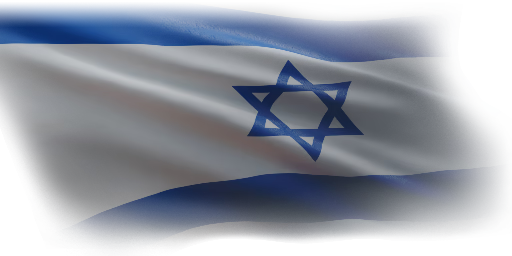
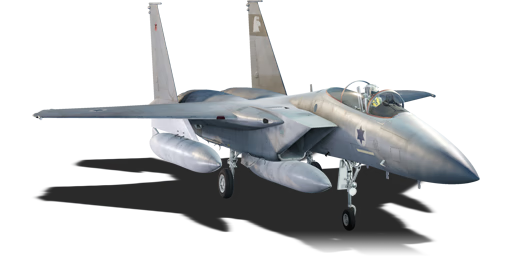


In the late 1970s, under the Peace Fox I program, Israel received its first shipment of the latest F-15A Eagle air superiority fighters, and shortly after, the second shipment was temporarily embargoed as a result of the 1982 Lebanon War. However, that did not matter to the Israelis, as even a single F-15 was a landslide advantage in the air wars of the Middle East, making short work of the 30-year-old Syrian MiG-21s that tried to face it. The Israeli F-15A, nicknamed the Baz ("Falcon"), would score the first kill for the F-15 in aerial combat, against a Syrian MiG-21, in 1978, and would start the totem pole of air dominance that defines the F-15's service record. Of the 103+ confirmed aerial kills the F-15 has scored during its service life, Israeli F-15s are responsible for over 80 of them, and the Baz is the concrete starting ground for this long-lasting legacy.
The Baz, introduced in Update "Air Superiority", is Israel's counterpart to the F-15s found in the American and Japanese tech trees. As a result, the Baz plays almost identically to its Eagle brothers in the other trees, with a few minor differences. The main difference, is that unlike the American and Japanese Eagles, the Baz has access to the Python 3 missile, in addition to the usual selection of AIM-9L and M. The Baz is best played to the same advantages as the other Eagles; do not get too slow, as high-AoA fighters like the JAS39 and the Su-27 will utilize their low speed dogfighting advantages (HMD-slaved missiles and high AoA control) against you. Instead, rely on your own advantages, such as the absurd thrust-to-weight ratio from the powerful engines and the very stable airframe, to set up high-speed engagements in scenarios that favour the Eagle's high speed performance.
flaps
flaps
flaps
brake
| Belt | Belt filling | Armor penetration (mm) at a distance: | |||||
|---|---|---|---|---|---|---|---|
| 10 m | 100 m | 500 m | 1000 m | 1500 m | 2000 m | ||
| HEF-I/API-T/AP-I/SAPHEI | 40 | 36 | 22 | 12 | 6 | 3 | |
| HEF-I/HEF-I/API-T/HEF-I/HEF-I/AP-I | 40 | 36 | 22 | 12 | 6 | 3 | |
| SAPHEI | 37 | 33 | 20 | 11 | 6 | 4 | |
| HEF-I/AP-I/AP-I/SAPHEI | 40 | 36 | 22 | 12 | 6 | 3 | |
| Name | Weight | Slot | ||||||||||
|---|---|---|---|---|---|---|---|---|---|---|---|---|
| 84.5 kg | 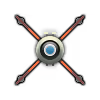 |  |  |  | ||||||||
| 121 kg | 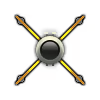 |  |  |  | ||||||||
| 84.5 kg |  |  |  |  | ||||||||
| 240.9 kg |  |  |  | |||||||||
| 254 kg | 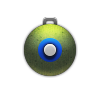 |  |  | |||||||||
| 6 × | 1,445.4 kg | 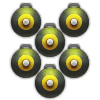 |  |  | ||||||||
| 6 × | 1,524 kg | 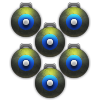 |  |  | ||||||||
| 893.6 kg | 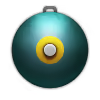 |  |  | |||||||||
| 1,027 kg | 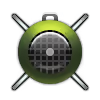 |  |  | |||||||||
| 3 × | 1,204.2 kg | 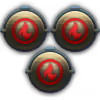 |  |  | ||||||||
| Drop tank (610 gal.) | 145.1 kg | 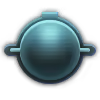 |  |  | ||||||||
| 231.3 kg | 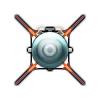 |  |  |  | ||||||||












Flight performance | |
|---|---|
Survivability |
|---|
Weaponry | ||
|---|---|---|